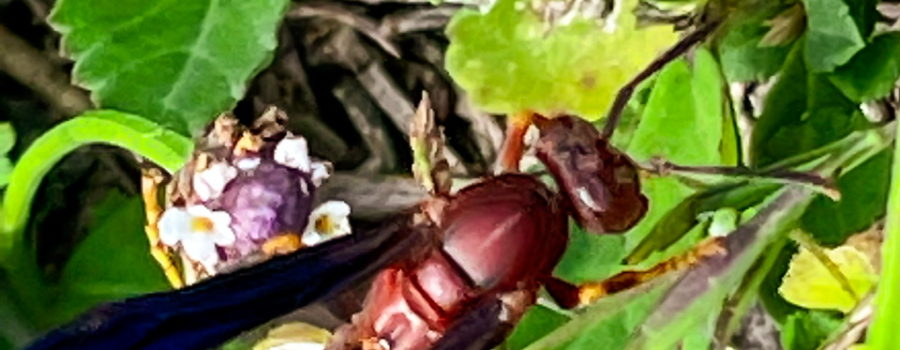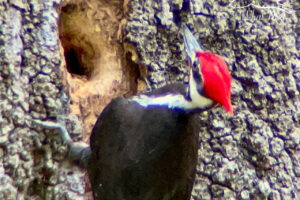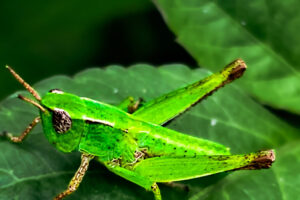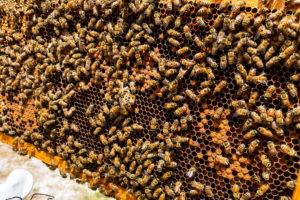Metric Paper Wasps are Nonaggressive and Great for Your Garden!

Along with warmer temperatures and spring flowers (and early summer flowers, here in Florida) come some of the many, many insects that we are infamous for. Of course, many of these insects are nuisances (ie flies, gnats, no-see-ums, and mosquitoes, just to mention a few), but many of them are beneficial, too. One of those beneficial insects is the paper wasp. Last spring I wrote about the common paper wasp or Guinea paper wasp, so today I want to discuss it’s cousin, the metric paper wasp or metricus wasp. There are actually 22 different types of paper wasps, but not all of them live here in Florida (thank goodness!). The thing that distinguishes them from other types of wasps is that they all build nests made from chewed plant fibers mixed with saliva. These nests are made up of many cells where eggs are laid and larvae mature.

Like the common paper wasp, metric paper wasps are predators, but they also eat nectar and pollen, and thus help pollenate all your garden plants. They are longer lived than a lot of other wasps, so they do tend to need more protein and are more predatory than a lot of other wasps. Because of this, they prefer large prey, specifically caterpillars (but they eat a lot of other nuisance insects as well). Again, this makes them great for your garden! They capture their prey by stinging them and causing paralysis. Unlike many other types of wasps their stingers are not barbed, so they can sting repeatedly. Luckily for us, they don’t tend to be aggressive towards people, so unless you pester them or disturb occupied nests, they will leave you alone (even if you’re a stalking photographer!).

The metric paper wasp is not as colorful as the common paper wasp. It tends to have very little yellow or striping, but instead has a solid red-brown head and thorax, with a solid black abdomen. A close relative, the ringed paper wasp, looks almost the same, but with a noticeable yellow band around the abdomen at the first segment. We do have both of them here, so I will have to continue stalking red and black wasps until I’m able to identify the other species!

Interestingly, most wasps have some fairly noticeable sexual dimorphism (at least noticeable to entomologists), but in both the metric and the ringed paper wasps males and females look almost alike. About the only quick way to tell them apart is by counting the abdominal segments. Females have six segments, while males have seven. Based on that, I was able to determine that this particular wasp was a female. She was flying around from flower to flower feeding on nectar, and really paid me no attention at all. I followed her for about five minutes before she headed off in a very purposeful manner. I assume she was probably headed back to her nest in some sheltered place in the woods. The breeding season will be starting soon, so I’m sure nest building is going on madly right now.





Recent Comments